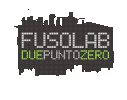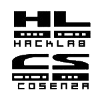ACCESSO AI SERVIZI NINUX.ORG DA RETE IPv6
La rete Ninux ha decisamente abbracciato il nuovo protocollo IPv6: tutta l'infrastruttura di trasporto wireless è ormai stabilmente dual-stack e, col nostro autonomous system, siamo una parte effettiva di Internet: la nostra home-page mostra graficamente il traffico Ipv6 scambiato da Ninux con il resto del mondo v6.
Adesso Ninux compie un nuovo passo avanti: apre agli utenti Internet v6 i suoi servizi interni, che finora potevano essere utilizzati solo da coloro che avessero un nodo della intranet Ninux a casa propria.
Cosa trovo nella rete Ninux ADESSO ?
Si comincia con due servizi online, tra i più gettonati dai membri della Community: un relay Jabber e un server Openarena.
Jabber è una soluzione open source che, utilizzando il protocollo XMPP, realizza chat e audioconferenze per tutti. La creazione di una utenza sul Jabber Ninux è libera per qualsiasi internauta v6 (qui le istruzioni) e consente di entrare in contatto diretto con i membri della Community che, con frequenza, sono presenti in chat.
Al momento il nostro Jabber è un server autonomo, ma stiamo studiando pro e contro di renderlo parte di una federazione più ampia di server XMPP. Crediamo infatti che le altre soluzioni proprietarie, dovendo obbedire a logiche di mercato, abbiano nel proprio DNA un limite intrinseco al libero sviluppo. Al contrario una federazione mondiale di server Jabber, non governata centralmente e basata su software open source, garantisce la massima disponibilità e indipendenza da interferenze esterne.
Openarena è invece la sala ricreativa dei Nerd di tutte le età e non ha bisogno di presentazioni: chi è interessato agli sparatutto certamente lo conosce già e qui trova le istruzioni per collegarsi.
Cosa potrei trovare in futuro?
La limitata capacità di banda di Ninux e lo spirito della Community ci orientano a fornire solo servizi caratterizzati da traffico discontinuo e di utilità generale, come i due descritti. Un esempio di ciò che stiamo studiando per il futuro è l'installazione pervasiva di stazioni meteo, presso taluni dei nostri nodi, che consentano di conoscere la situazione climatica puntuale in diverse zone tra quelle coperte dai nodi Ninux.
Si, è tutto bello ma come entro in IPv6 se il mio ISP offre solo IPv4?
Ci sono ormai molti provider che, gratuitamente, offrono agli internauti v4 la possibilità di salire sul treno v6, tra i quali:
SIXXS (www.sixxs.net)
Hurricane Electric (www.he.net)
GogoNET (gogonet.gogo6.com)
Ognuno utilizza una implementazione diversa del protocollo che consente di incapsulare traffico IPv6 dentro pacchetti IPv4. Inoltre si differenziano tra di loro per la dislocazione geografica dei propri POP, che non sono in tutti i Paesi.
Per tutti questi provider, tuttavia, si tratta di richiedere il tunnel v6, con un procedimento automatico o moderato da una community. Al tunnel v6 che vi sarà assegnato verrà associato un indirizzo v6 /64 (cioé metà della lunghezza di un indirizzo completo) STATICO, ossia non soggetto a cambiare nel tempo, collegamento dopo collegamento; l'altra metà dell'indirizzo v6 il vostro PC la ricaverà da solo, dal MAC address dell'interfaccia fisica a cui sarà assegnato l'indirizzo v6.
Quando avrete configurato tutto e stabilito il tunnel non percepirete nessuna differenza nella consueta navigazione Internet, se non che alcuni siti (quelli Ninux che ospitano i servizi descritti, per esempio) li potrete usare SOLO se avete il tunnel v6 attivato.








